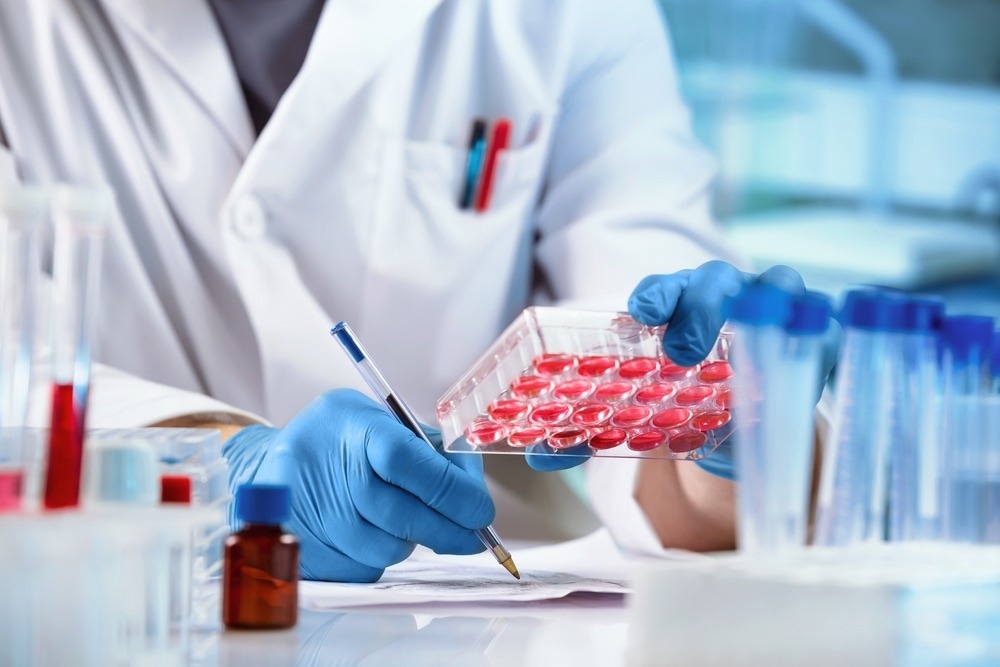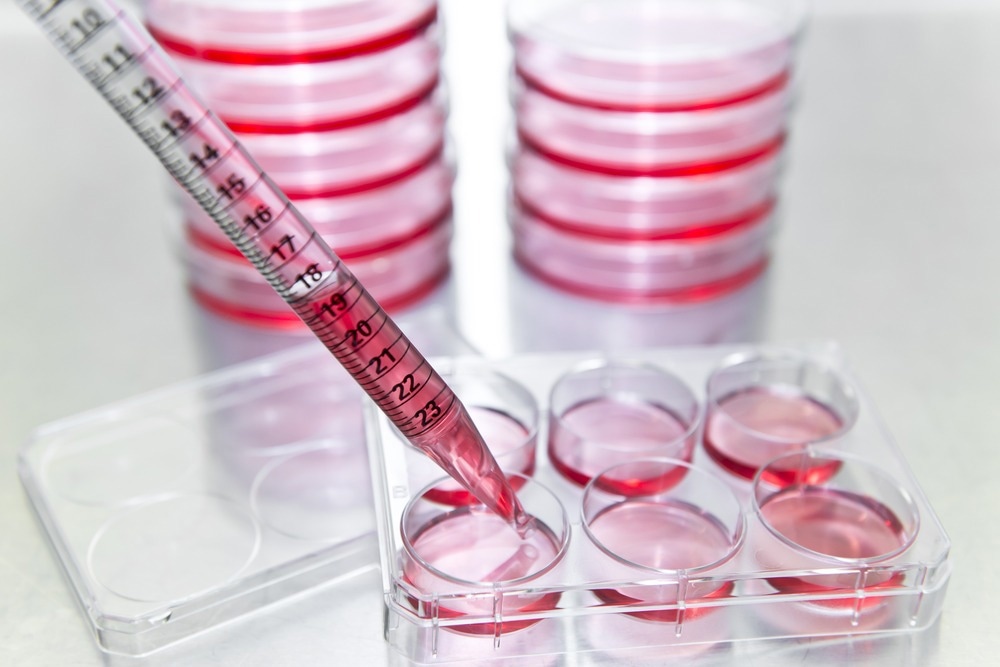Biomanufacturing is one of the most incredible technological advancements associated with nature-based tools, such as enzymes, microorganisms, and fermentation. The biomanufacturing industry significantly relies on quality control tests to validate the identity, purity, safety, and potency of drugs and biologics. Different cell analysis systems have been designed and commercially manufactured for quality control and to validate the final biological product.1

Image Credit: angellodeco/Shutterstock.com
Importance of Cell Analysis in Biomanufacturing
Biomanufacturing processes directly or indirectly impact many industries, such as building and construction, bioremediation, cementing, electronics, food, pharmaceutics, and consumer products (textile, paper, and nylon). Several cell analysis systems have been designed to ensure a suitable and high-quality final product.2
Cell-based systems play a crucial role in biopharma companies because they validate good manufacturing practices (GMP) and the production of high-quality therapeutics and biologics. In cell therapy biomanufacturing, it is imperative to analyze the nature of the product before administering it to patients. Characterization of bioproducts ensures that a high-quality product is used every time for treatment.
Typically, products are characterized in a laboratory setting before clinical trials. This enhances the success rates of clinical trials and commercialization. Cell-based assays can accelerate the development of therapeutics.3 These assays are designed to provide accurate results for GMP quality control (QC) testing, optimizing drug/biologics, and developmental processes.
In biopharmaceutical companies, it is essential to select an appropriate cell analysis system to perform QC tests. During biomanufacturing, final products may have impurities that can potentially impact their overall quality and safety. If QC tools are not used, defective or poor-quality products that could have harmful effects on patients will be used. An optimized cell analysis system will ensure the safety and efficacy of pharmaceutical agents by determining the identity, potency, and purity of biomanufactured products. 4
Different Types of Cell Analysis Systems
Cells are analyzed via different methods, such as cell imaging, flow cytometry, and cell-based assays. These are discussed below:
Cell Imaging
Some of the common cell imaging techniques are phase-contrast microscopy, fluoresce imaging, brightfield microscopy, confocal microscopy, 4D live-cell imaging, and automated microscopy. Typically, intact cells can be studied using phase contrast microscopy, whereas fluorescent imaging helps analyze particular molecules or organelles in a cell. Confocal microscopy is used to obtain high-quality images and 3D reconstruction of cells.
Live-cell imaging is an essential analytical tool used in research laboratories that are focused on cell biology, pharmacology, developmental biology, and neurobiology. To suitably study fixed cells and tissues, it is essential to have high-intensity light illumination and long exposure time. However, these conditions are avoided while analyzing living cells.5
The development of live-cell microscopy offers high-resolution cell images without affecting healthy cells. Optical microscopy has a significant contribution to the study of live cells.6 A combination of fluorescence microscopy and advanced transmitted light techniques has enabled the analysis of living cells. In addition, a combination of confocal and time-lapse microscopies enables 4D live-cell imaging.7
Automated microscopy is equipped with several hardware and software features that enable accurate focus in every field of view and subsequent high-quality imaging.

Image Credit: unoL/Shutterstock.com
Cellular Assays
Several cell-based assays have been designed to characterize a cell fully. These assays are also developed to determine the safety and efficacy of therapeutic products or biologics. Cell-based assays hold extreme importance in academia and biomanufacturing because these assays mimic a real-life condition or biological process that enables analysis of various functional and biochemical effects.8
Cellular assays are designed to track multiple variables, such as cell proliferation, behavior, apoptosis, enzyme activity, reporter gene activity, signal transduction, and complement-dependent cytotoxicity. In cell culture assays, live cells are grown in vitro and are used as a model system to analyze the physiology and biochemistry of both healthy and diseased cells.
Cell lines have revolutionized scientific research and are used for a wide range of applications, including the production of vaccines/biologics and cell-based assays. Cell lines are developed per experimental needs and play a crucial role in GMP and QC testing in the biomanufacturing industry.9
Cell lines are used for high throughput screening, and toxicity and functional assays. Cell assays are selected to understand or validate the mechanism of action of a drug target. Many molecular tools, such as CRISPR and TALEN, are used to manipulate an assay to attain desired sensitivity.10
Flow Cytometry
Flow cytometry is a cell analysis technology that offers rapid analysis of single cells as they flow past a laser (single or multiple) while being suspended in a buffered salt-based solution. Each cell is analyzed for its visible light scatter and fluorescence. This technique is widely implemented in different research areas, including disease response to drugs, disease monitoring, virology, and cancer biology.11
Commercial Examples of Cell Analysis Systems
Different cell culture plates and cellular assays, such as ViaLight Assay Kits, have been manufactured by Lonza for accurate, reliable, and efficient cytotoxic evaluations. Accurate monitoring of cell health is crucial for optimal bioprocessing. Cytotoxic assays help determine pharmaceutical agents that have harmful effects on cells.
The ToxiLightTM BioAssay Kit is a bioluminescent cytotoxicity bioassay manufactured by Lonza, which determines toxicity in mammalian cells. Unlike many cytotoxicity assays, ToxiLight does not kill cells, and, thereby, the samples can be re-used for further experiments.12
BMG LABTECH has manufactured different types of cell viability assays, such as Tetrazolium-based assays, and ATP Luciferase assays, which are based on cellular ATP production, metabolic activity, and cellular reproduction potential. BMG LABTECH’s RealTime-GloTM Annexin V assay is a robust cytotoxic assay that is used to differentiate between apoptosis and necrosis.13
Cellular migration assays are used to study tissue formation, cancer progression, and immune defense. The OrisTM cell migration assay has been designed by BMG LABTECH to determine cellular movements based on fluorescent proteins or luciferases.14 Agilent's xCELLigence RTCA eSight has been designed to generate cell behavior data in real time. This live cell analysis system provides data on cell viability, morphology, and growth.15
Sources:
- Zhang, Y.-H. P., et al. (2016). Biomanufacturing: history and perspective. Journal of Industrial Microbiology & Biotechnology. 44(4-5), pp.773–784. doi.org/10.1007/s10295-016-1863-2
- Gargalo, C. L., et al. (2020). Towards smart biomanufacturing: a perspective on recent developments in industrial measurement and monitoring technologies for bio-based production processes. Journal of Industrial Microbiology & Biotechnology, 47(11), pp.947–964. doi.org/10.1007/s10295-020-02308-1
- Nierode, G., et al. (2016). Cell-Based Assay Design for High-Content Screening of Drug Candidates. Journal of microbiology and biotechnology, [online] 26(2), pp.213–225. doi.org/10.4014/jmb.1508.08007
- Limpikirati, P. K., et al. (2023). Basic Regulatory Science Behind Drug Substance and Drug Product Specifications of Monoclonal Antibodies and Other Protein Therapeutics. Journal of Pharmaceutical Analysis. doi.org/10.1016/j.jpha.2023.12.006
- Jensen, E. C. (2012). Overview of Live-Cell Imaging: Requirements and Methods Used. The Anatomical Record: Advances in Integrative Anatomy and Evolutionary Biology, 296(1), pp.1–8. doi.org/10.1002/ar.22554
- Balasubramanian, H., et al. (2023). Imagining the future of optical microscopy: everything, everywhere, all at once. Communications Biology, [online] 6(1), pp.1–12. doi.org/10.1038/s42003-023-05468-9
- Ettinger, A. & Wittmann, T. (2014). Fluorescence live cell imaging. Methods in Cell Biology, 123, pp.77–94. doi.org/10.1016/B978-0-12-420138-5.00005-7
- Cardoso, B. D., et al. (2023). Recent Advances on Cell Culture Platforms for In Vitro Drug Screening and Cell Therapies: From Conventional to Microfluidic Strategies. Advanced Healthcare Materials, p.2202936. doi.org/10.1002/adhm.202202936
- Le, H., et al. (2015). Cell line development for biomanufacturing processes: recent advances and an outlook. Biotechnology Letters, 37(8), pp.1553–1564. doi.org/10.1007/s10529-015-1843-z
- Cook, A.L., et al. (2022). An isogenic cell line panel for sequence-based screening of targeted anticancer drugs. IScience. 25(6). doi.org/10.1016/j.isci.2022.104437
- McKinnon, K. M. (2018). Flow Cytometry: an Overview. Current Protocols in Immunology, 120(1), pp.5.1.1–5.1.11. doi.org/10.1002/cpim.40
- Cell Assays and Analysis. Lonza. Available at: https://bioscience.lonza.com/lonza_bs/GB/en/cell-assays-and-analysis.
- Real-time assessment of apoptosis and necrosis. BMG Labtech. Available at: www.bmglabtech.com/.../real-time-assessment-of-apoptosis-and-necrosis.
- Volz, A.C. (2022). Cell-based assays on the rise. Available at: https://www.bmglabtech.com/en/blog/cell-based-assays-on-the-rise/.
- Do you know what your cells are doing? Agilent. Available at: https://explore.agilent.com/esight_ebook.
Further Reading
Last Updated: Feb 15, 2024